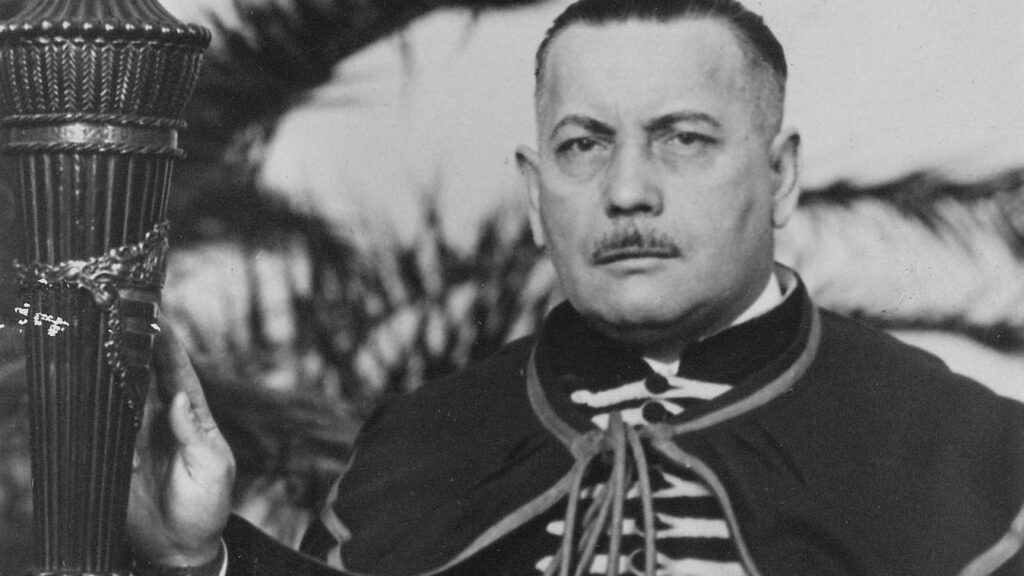A comprehensive account of the history of the Hungarian right-wing Zionist (Revisionist) movement has long remained a neglected task for Hungarian researchers of Jewish history, and in this context, it is perhaps not surprising that Nathan Ben-Chaim is just as under-researched a figure as the movement whose history he wrote.[1] Ben-Chaim was born in Budapest in 1918 under the name Imre Ausländer, and according to his own account, he sympathized with communism until 1935. He recalled it as follows: ‘Until I was 16 or 17, I was drawn to the communists because at that time everyone wanted justice. But I grew up in a “traditional” Jewish family, with strong Jewish sentiments. These sentiments were Jewish, but not Zionist, as the majority of Hungarian Jews at that time were “assimilated” and even anti-Zionist. It was during this period that I became aware of antisemitism and of being singled out as a Jew, even in communist circles, and so, seeking a suitable ideology, I turned to the Zionist movement.’[2]
Finally, at the age of 17, he joined the rather feeble Hungarian Revisionist movement, namely its youth branch, Betar. In his recollections, he did not hide the fact that at that time the Budapest ken (‘nest’, essentially a Betar cell) had at most 35 members, and across the entire country there were only a few hundred Betar members at most (though even this might be an overestimate, as this was before the territorial expansions, and the movement was stronger in the areas Hungary regained during the Second World War). The movement prepared Jewish youth for military engagement in a future war against the Arabs in Palestine. According to Ben-Chaim, they learned things such as ‘saluting, standing at attention, and so on. Let us not forget that Hungary was considered a militarist nation, and Hungarian youth were militarist as well.’[3] Ben-Chaim went through several ‘leadership trainings’, including in Austria and Poland, and ultimately became the leader of the Budapest ken before his Aliyah.

According to his recollection, he was finally able to make Aliyah only in 1938, because a year earlier, his parents had taken away his passport, causing him to miss the departing ship, which was carrying Polish and Austrian Revisionists as well. If this is how it happened, then his article in the official Betar publication, Bné Betár, can also be seen as a kind of ‘farewell’. Titled ‘The Golden Calf’, the short piece stated that Zionism was the Torah, and assimilation the golden idol. ‘Down below, the rabble, led by the discontented, dances around the Golden Calf. Wouldn’t it feel good to stone them to death?’—the author posed this dramatically phrased question, which, however, reflected the radical sentiments of the era.[4]
In Palestine, he participated in the two-year training of Betar’s ‘recruiting unit’, and between 1940 and 1946, he fought in the British Army, following Betar’s directives to join the war effort. At the end of the war, he also served on the front in Northern Italy. Later, he was sent to occupied Germany, where he taught Hebrew classes to Hungarian Jewish survivors, among others. It was there that he met his future wife, who had once collaborated with Rosenberg Tibor, an emblematic Hungarian member of Lechi, working from their Paris headquarters to flood England with letter bombs to force it to hand over Palestine to the Jews. Although the plan did not succeed, it was typical of the right-wing Zionist activism of the era.[5] After the war, Ben-Chaim received permission to come to Hungary to locate his parents, who had miraculously survived the Holocaust and later joined him in Palestine.
Ben-Chaim also took part in a key event in the history of the Revisionist movement: as part of the Irgun, under the movement alias ‘Yoav’, he was present among the Jewish soldiers defending the moshav Mismar Ha’Yarden. The story of Mismar Ha’Yarden is one of several incidents that the Revisionist movement repeatedly cited for decades to criticize the left (another such story being the Altalena affair). The moshav, primarily inhabited by Revisionists, was attacked by the Syrian army on 6 June 1948. At that time, the attack was repelled, but on 10 June, a new siege began, and the moshav was taken house by house. Several defenders were killed, and 39 survivors were captured by the Syrians. The settlement was never rebuilt, although another community later adopted its name.
The Irgun long claimed that reinforcements had been blocked by the left-wing Haganah, preventing the defence of the settlement. The Haganah naturally denied this. Ben-Chaim participated in the defence until the last day, but on 9 June, he and his wife were sent out to obtain food and fuel, and he was not present when Mismar Ha’Yarden fell. In any case, in 1949, he published an article in the right-wing Herut newspaper about the first days of the siege.[6] His recollection, while a compelling account of the siege, ultimately does not address the disputed point—the fall of the settlement on 10 June.
‘The moshav, primarily inhabited by Revisionists, was attacked by the Syrian army on 6 June 1948…Several defenders were killed, and 39 survivors were captured’
His most significant achievement was undoubtedly the compilation of a Hebrew-language volume commemorating the Hungarian Betar movement. Yad Le’Betar Hungaria (The Memory/Monument of Betar in Hungary) is a key source for understanding the history of the movement in Hungary. The volume presents the story of the movement’s founding in Hungary (as recounted by Yitzhak Eisdorfer), includes a chapter on its early years (by Reuven Davagi, ie, István Fenyvesi), followed by the memoirs of the former national leader of Hungarian Betar, Dénes Szilágyi, and provides extensive coverage of the movement’s last years before the Holocaust (1937–1944) through the accounts of Hana Libai, Mattityahu Eilat, and Yehuda Litman. Betar’s activities during the Holocaust are described by Yakov Fleischman, and the postwar years by Yehuda Udi (Weiszberger). Ben-Chaim himself also contributed a chapter, which recounts the story of illegal Aliyah.[7]
This is particularly important because, although Zionists in general received little attention in the literature on the Holocaust in Hungary, right-wing Zionists were even less visible—their voice represents a minority within a minority, one that mainstream historiography has largely neglected or ignored entirely. A parallel can be drawn with how the Warsaw Ghetto Uprising has been treated in both Polish and Israeli historiography: before Chaim Lazar Litai’s book Muranowska 7, the Revisionist-Zionist-dominated Jewish Military Union (Żydowski Związek Wojskowy) barely appeared in accounts of the uprising, and Betar’s role had largely been suppressed.[8] Sadly, Ben-Chaim’s volume has still not been translated into Hungarian. In fact, no Hungarian book has yet been published on Revisionist Zionism; aside from contemporary publications that are now extremely rare, only a short selection of Jabotinsky’s writings appeared in 1990, translated by László Bassa and edited by Katalin Ambrus.[9]
Nathan Ben-Chaim passed away on 22 October 2009. In shedding light on his work and the history of the Hungarian Betar movement, we not only recover a lost voice of right-wing Zionism but also gain a fuller, more nuanced understanding of Jewish history in Hungary before, during, and after the Holocaust.
[1] For the history of Betar in Hungary see: László Bernát Veszprémy, ‘Egy holtig betári. Szilágyi Dénes radikális cionista munkássága’, Múlt és Jövő, 2018/2–3, 104–113.
[2] For the biographical details cited here, see Ben-Chaim’s two interviews: Tali Shachori: Tnuat Betar Hungaria mishlehe milchemet olam rishona ad shilehe milchamat olam shniyah, Ben-Gurion University, seminary paper, 1988, pp. 50–53. The other one can be found here: National Library of Israel, (212)4 (HU catalogue: 9920898496503701)
[3] Interestingly, Betar usually called its group ‘maoz’, meaning ‘fortress’, to differentiate itself from the pioneer movements, but Ben-Chaim refers to his group as ‘ken’.
[4] Bné Betár, March 1937 issue, p. 55.
[5] Tibor Rosenberg’s 1962 memoir can be found at the Jabotinsky Institute, without any particular reference number.
[6] ‘Kach nafla Mishmar Ha’yarden’, Herut, 5 May 1949, p. 2.
[7] Yad Le’Betar Hungaria, 1928–1948, Ed Nathan Ben-Chaim, Tel-Aviv.
[8] Chaim Lazar, Muranowska 7: the Warsaw Ghetto Rising, Tel Aviv, Massada, 1966.
[9] Jabotinsky írásaiból, ed Ambrus Katalin, trans Bassa László, Bp, 1990.
Related articles:







